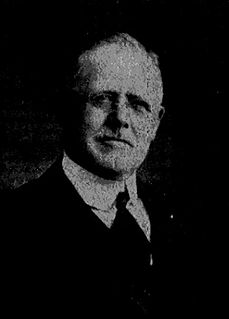This article needs additional citations for verification .(March 2013) (Learn how and when to remove this template message) |
| Charles Joseph Chamberlain | |
|---|---|
| Born | February 23, 1863 Sullivan, Ohio |
| Died | February 5, 1943 (aged 79) Chicago, Illinois |
| Scientific career | |
| Fields | Botany |
| Author abbrev. (botany) | Chamb. |
Charles Joseph Chamberlain, Ph.D. (February 23, 1863 – February 5, 1943) was an American botanist, born near Sullivan, Ohio, and educated at Oberlin College and at the University of Chicago, where he earned the first Ph.D. in that institution's botany department, and where he was a long-time employee, becoming associate professor in 1911. He is known for pioneering the use of zoological techniques on the study of plants, particularly in the realm of microscopic studies of tissues and cells; his specialty was the cycad. He made contributions to the Botanical Gazette, and was the author of Methods in Plant Histology (1901) and The Morphology of Angiosperms (1903). In collaboration with John M. Coulter, he wrote The Morphology of Gymnosperms (1910).

The United States of America (USA), commonly known as the United States or America, is a country composed of 50 states, a federal district, five major self-governing territories, and various possessions. At 3.8 million square miles, the United States is the world's third or fourth largest country by total area and is slightly smaller than the entire continent of Europe's 3.9 million square miles. With a population of over 327 million people, the U.S. is the third most populous country. The capital is Washington, D.C., and the largest city by population is New York City. Forty-eight states and the capital's federal district are contiguous in North America between Canada and Mexico. The State of Alaska is in the northwest corner of North America, bordered by Canada to the east and across the Bering Strait from Russia to the west. The State of Hawaii is an archipelago in the mid-Pacific Ocean. The U.S. territories are scattered about the Pacific Ocean and the Caribbean Sea, stretching across nine official time zones. The extremely diverse geography, climate, and wildlife of the United States make it one of the world's 17 megadiverse countries.

Sullivan is an unincorporated community in central Sullivan Township, Ashland County, Ohio, United States. Although it is unincorporated, it has a post office, with the ZIP code of 44880. It lies at the intersection of U.S. Route 224 with State Route 58.

Ohio is a Midwestern state in the Great Lakes region of the United States. Of the fifty states, it is the 34th largest by area, the seventh most populous, and the tenth most densely populated. The state's capital and largest city is Columbus.
Chamberlain married Martha E. Life in 1888 and they had one daughter; after his wife died in 1931, he married Martha Stanley Lathrop in 1938. He died in Chicago, Illinois.

Illinois is a state in the Midwestern region of the United States. It has the 5th largest Gross Domestic Product by state, is the 6th-most populous U.S. state and 25th-largest state in terms of land area. Illinois is often noted as a microcosm of the entire United States. With Chicago in the northeast, small industrial cities and great agricultural productivity in northern and central Illinois, and natural resources such as coal, timber, and petroleum in the south, Illinois has a diverse economic base, and is a major transportation hub. Chicagoland, Chicago's metropolitan area, contains over 65% of the state's population. The Port of Chicago connects the state to other global ports around the world from the Great Lakes, via the Saint Lawrence Seaway, to the Atlantic Ocean; as well as the Great Lakes to the Mississippi River, via the Illinois Waterway on the Illinois River. The Mississippi River, the Ohio River, and the Wabash River form parts of the boundaries of Illinois. For decades, Chicago's O'Hare International Airport has been ranked as one of the world's busiest airports. Illinois has long had a reputation as a bellwether both in social and cultural terms and, through the 1980s, in politics.







